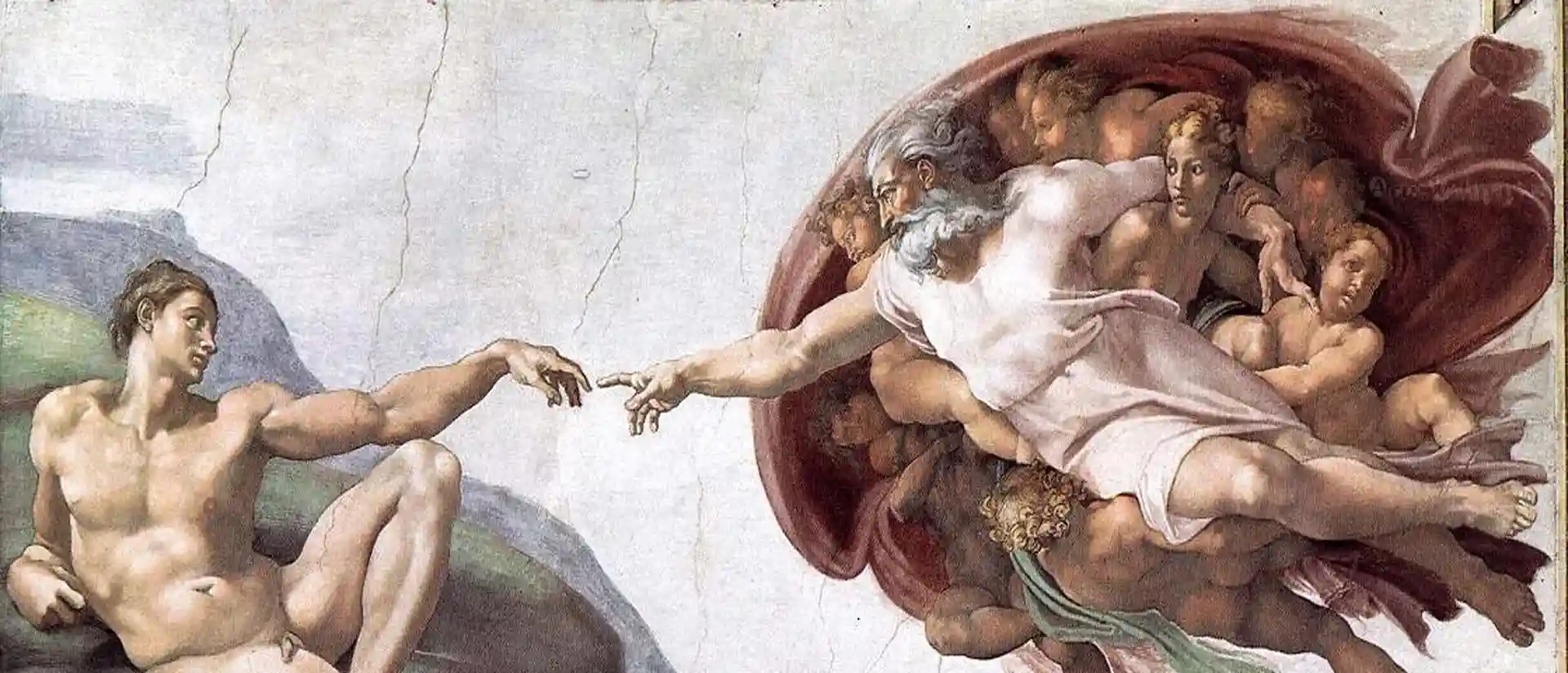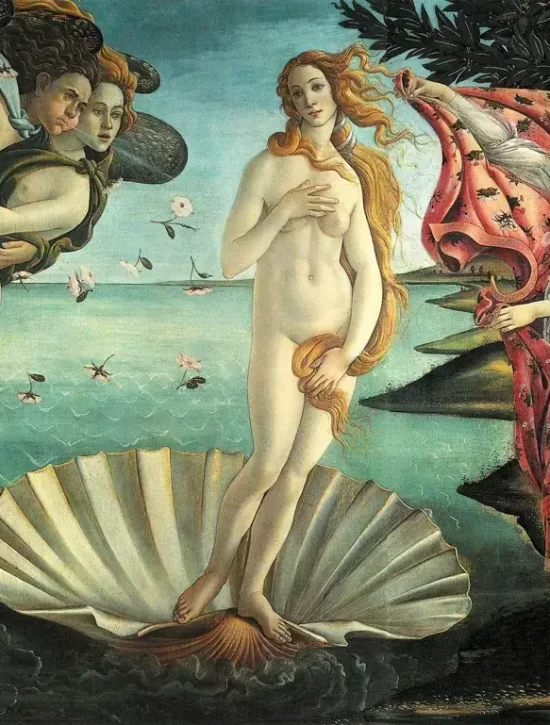The Italian Renaissance time and Italian Renaissance painters are an examples of great cultural change and achievement that spanned the 14th to the 17th century. It saw a renewed focus on the art, architecture, and philosophy of ancient Rome and Greece, and this rebirth of classical culture led to an explosion of artistic excellence.
The following are some of the most influential artists of the Italian Renaissance, whose works have transcended time and continue to awe and inspire generations.

Leonardo da Vinci (1452–1519)
Leonardo da Vinci was the quintessential Renaissance man and Italian Renaissance painters, whose skills extended far beyond painting to include scientific observation, engineering, and anatomy. He is best known for his enigmatic paintings “The Last Supper” and “Mona Lisa,” artworks that carry a depth of humanity coupled with a complex interplay of light and shadow, a technique known as sfumato.
Michelangelo Buonarroti (1475–1564)
Michelangelo‘s work as a painter, sculptor, and architect illustrates a blend of physical realism and psychological insight. His paintings on the ceiling of the Sistine Chapel in Vatican City, including the iconic “Creation of Adam,” are some of the most influential frescoes in the history of Western art.
Raphael Sanzio (1483–1520)
Raphael was noted for his clarity of form and ease of composition. His work is often cited for its harmony and balance. His “School of Athens” is hailed as a perfect embodiment of the classical spirit of the Renaissance. Raphael’s Madonnas are also celebrated for their serene and tender humanity.
Sandro Botticelli (1445–1510)
Known for his lyrical, flowing lines, Botticelli’s work includes some of the most famous paintings of the early Renaissance, such as “The Birth of Venus” and “Primavera.” These paintings are renowned for their mythological subject matter and intricate allegorical narratives.
Titian (c. 1490–1576)
Titian was the most important painter of the Venetian school and was recognized by his contemporaries as “The Sun Amidst Small Stars” (recalling Dante’s description of him). His use of color and his development of a painterly technique where brushstrokes melded together helped define the Venetian style. His works included sensuous nudes and profound religious subjects.
Caravaggio (1571–1610)
Caravaggio was a revolutionary artist whose dramatic lighting and intense realism brought a new level of emotional and theatrical power to painting. His stark contrasts of light and dark, a technique known as chiaroscuro, influenced an entire generation of artists known as the Caravaggisti.
Giotto di Bondone (c. 1267–1337)
Though slightly earlier than the traditional Renaissance period, Giotto is often considered the first in a line of great artists who contributed to the Renaissance. He is credited with breaking away from the stylized forms of Byzantine art to create more naturalistic representations of space and human figures.
Fra Angelico (c. 1395–1455)
Fra Angelico was a painter and Dominican friar who created works of inspirational spirituality. His ethereal frescoes, including those in the monastery of San Marco in Florence, are hailed for their serene piety and use of delicate colors.
The Heritage of Italian Renaissance Painters
These artists along with many others from the Renaissance era forever changed the landscape of art, influencing techniques and aesthetics in ways that are studied and revered to this day. The richness of their work extended beyond the canvas presenting a complex interweaving of theology, philosophy, and history, serving as visual manifestations of a culture reborn. Whether you’re an art enthusiast, a student of history, or a curious mind, these Italian masters provide a window into the profound beauty and innovation of the human spirit.
The Italian Renaissance saw the creation of some of the world’s most iconic works of art by Italian painters. The painters of the Renaissance were instrumental in the development of many modern conveniences.
Although it was in Italy that the Renaissance first began, many of the period’s most influential artists were French. Paris was the most heavily Renaissance-influenced region in France.

Some of the most fascinating pieces of art ever made were produced during this time, with major contributors including Jacques Villon, Jean Fouquet, and Quentin Metsys. Despite the fact that these painters were French nationals, they completed their canvases in Italy where they had more access to the resources they needed.
As a result, lots of artworks have Italian themes set in French locations. There were many other international artists who spent considerable time in Italy.
Role of Italian Renaissance Painters in Art History
The Italian Renaissance was a time of great innovation and advancement in the visual arts. Artists of the Renaissance period were among the first to explore new mediums, approaches, and concepts. They produced a number of works of art that are now considered to be among the best ever made.
Michelangelo was one of the most influential artists of the Italian Renaissance. The Pieta and Adam’s Creation are only two of Michelangelo’s famous works of sculpture. Like the sculptures, Michelangelo’s paintings, such as “The Last Judgment,” are impressive in size and scale.
Other notable Italian Renaissance artists like Leonardo da Vinci (famous for his innovations like the helicopter), Donatello (who sculpted the David statue), and Raphael contributed to Italian art during this time (the greatest painter of the Renaissance). Because of these brilliant creators, the Italian Renaissance is now recognized as a pivotal time in the evolution of art.
Artwork by well-known Italian Renaissance artists
These creators are responsible for some of the most iconic art in history. Famous for his paintings of animals, Leonardo da Vinci is sometimes compared to Michelangelo, Donatello is famous for bronze statues, and Raphael for lavishly decorated walls and ceilings.
The period known as the Italian Renaissance was one of great artistic development and innovation. Some of history’s most illustrious creators were active during this time. Their works rank among the finest examples of human creativity.
Not Only Italian Renaissance Painters… but an Aesthetic Movement
Italy underwent a profound transformation in the 16th century. Renaissance refers to the period of exceptional creative and cultural achievement in Italy between the 15th and 16th centuries. Artists in Italy developed a new school during the Renaissance that favored realistic detail over the more idealized shapes of earlier styles. Furthermore, they created works of literature, theatre, and music that are still cherished today.
Renaissance Era Creatives
Artists who had contributed to the great works of the Middle Ages reemerged during the Renaissance. Artists of the Renaissance began to explore new mediums and approaches, producing some of the most stunning and enduring works in history.
A newfound interest in the classical learning and values of Ancient Greece and Rome imbued artists with inspiration to step beyond the Gothic and medieval styles that had dominated European art. This bold era brought forward-thinking individuals who would profoundly influence the world of art, creating masterpieces that continue to captivate millions today.
Renaissance artists moved towards a more human-centric viewpoint, as reflected in their work through the exploration of human anatomy, perspective, and individual expression. Fascinated by the human form, they dissected its mechanics and beauty, translating this understanding onto canvas and in sculpture.
The innovative techniques and philosophical underpinnings of the Renaissance left a distinct and long-lasting mark on the trajectory of Western art. The era’s contributions revolutionized representation and opened pathways to modern thinking, which still inspires contemporary artists.
Works from this period do more than elicit admiration for aesthetic beauty; they provoke thought and serve as cultural touchstones that bridge the past and present. The fascination with the Renaissance reminds us of our perpetual quest for knowledge and beauty and the enduring power of human creativity.
The influence of Renaissance art extended beyond painted canvases and sculpted marbles—it permeated the very fabric of society, redefining the role of the artist from a mere craftsman to an intellectual and visionary, shaping our understanding of the human experience through visual brilliance.
In exploring Renaissance art, we find that it serves not just as a mirror to a bygone era of genius but also as an ongoing dialogue between the then and now, a dialogue that continues to define our cultural and artistic sensibilities.
The Greatest Italian Renaissance Painters According to What We Talked About Before
The greatest artists of the Renaissance were Michelangelo, Raphael, and Leonardo da Vinci. One of the greatest artists of all time, Leonardo da Vinci, also worked in sculpture, architecture, and science. The Mona Lisa and other portraits of humans and animals are his signature works.
The great heroes and gods depicted in Michelangelo’s sculptures have become icons of art and culture. His masterpiece, David, can be found in Florence.
Portraits of the Madonna were Raphael’s forte, and he became famous for them.
If you want to add your personal piece of Italian Renaissance to your home, look for breathtaking Fine Art Photographs at Paolo Modena Photography
WANT TO KNOW MORE ABOUT PAOLO MODENA?
Sing up to join a community of more than 200 art lovers, receive information about Paolo Modena’s fine art photography, and be the first to know about upcoming artworks.
Related Posts:
Paolo Modena
My name is Paolo. I am a photographer. I consider myself fortunate to have grown up in Italy, surrounded by the art that is the envy of the world. I enjoy photography because it has caused me to fall in love with light, shade, and color. I see the world around me with fresh eyes every single day. And sometimes, when the mood is right, I just sit back and enjoy the moment without taking a photo.
